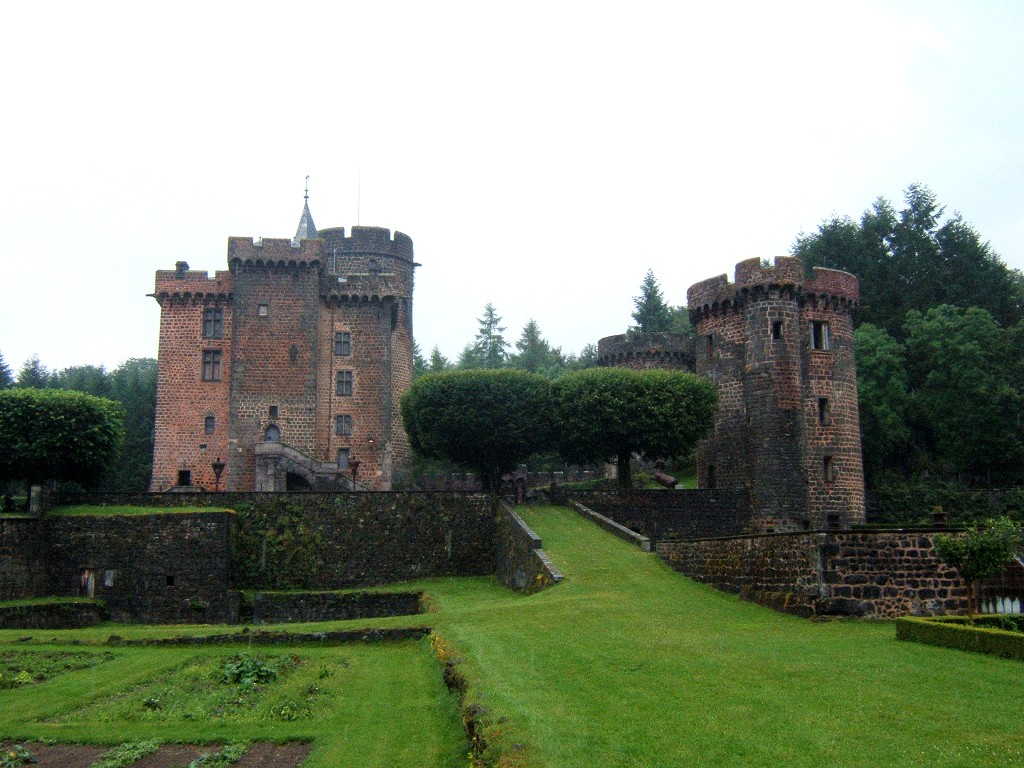Château-Dauphin on:
[Wikipedia]
[Google]
[Amazon]
 Château-Dauphin is a medieval castle in the ''
Château-Dauphin is a medieval castle in the ''
Official site of the Château Dauphin
Castles in Auvergne-Rhône-Alpes Monuments historiques of Puy-de-Dôme Museums in Puy-de-Dôme {{France-castle-stub
commune
A commune is an alternative term for an intentional community. Commune or comună or comune or other derivations may also refer to:
Administrative-territorial entities
* Commune (administrative division), a municipality or township
** Communes of ...
'' of Pontgibaud
Pontgibaud () is a commune in the Puy-de-Dôme départment in Auvergne in central France.
It is located in the Massif Central region of France on the banks of the river Sioule. The area around the town was historically known for silver and lead ...
in the Puy-de-Dôme
Puy-de-Dôme (; oc, label=Auvergnat, lo Puèi de Doma or ''lo Puèi Domat'') is a department in the Auvergne-Rhône-Alpes region in the centre of France. In 2019, it had a population of 662,152.département
In the administrative divisions of France, the department (french: département, ) is one of the three levels of government under the national level (" territorial collectivities"), between the administrative regions and the communes. Ninety ...
'' of France.
History
The castle owes its name to thecoat of arms
A coat of arms is a heraldic visual design on an escutcheon (i.e., shield), surcoat, or tabard (the latter two being outer garments). The coat of arms on an escutcheon forms the central element of the full heraldic achievement, which in its ...
of the person who built it in the 12th century: Robert I, Count of Auvergne, on whose arms was a dolphin
A dolphin is an aquatic mammal within the infraorder Cetacea. Dolphin species belong to the families Delphinidae (the oceanic dolphins), Platanistidae (the Indian river dolphins), Iniidae (the New World river dolphins), Pontoporiidae (the ...
(''dauphin''). The original construction was modified in the 15th century by Gilbert III Motier de La Fayette, who strengthened the defences and enlarged the keep. Abandoned in the 17th century for a more comfortable building, and damaged during the French Revolution
The French Revolution ( ) was a period of radical political and societal change in France that began with the Estates General of 1789 and ended with the formation of the French Consulate in coup of 18 Brumaire, November 1799. Many of its ...
, the castle was finally restored in the 19th century by Count César III of Pontgibaud.
The castle has been occupied since 1756 by the family of a King's musketeer, César I de Moré. The present owners, the Count and Countess Gabriel de Germiny, are his descendants. The castle, garden and museum are open to the public.
Architecture
The main building is a double keep. In effect, a round keep forms one of the corners of a strong square keep. The two parts are independent. The square keep is articulated around an interior court, covered in the 19th century by a glass canopy. The fortified curtain wall includes seven towers, of which six stand today. The castle includes akitchen garden
The traditional kitchen garden, vegetable garden, also known as a potager (from the French ) or in Scotland a kailyaird, is a space separate from the rest of the residential garden – the ornamental plants and lawn areas. It is used for grow ...
known from records of the 16th century. It was restored in the 18th century. There is also a museum dedicated to silver
Silver is a chemical element with the symbol Ag (from the Latin ', derived from the Proto-Indo-European ''h₂erǵ'': "shiny" or "white") and atomic number 47. A soft, white, lustrous transition metal, it exhibits the highest electrical ...
mining in the canton of Pontgibaud, mostly in the second half of the 19th century by the Société des mines et fonderies de Pontgibaud
The Société des mines et fonderies de Pontgibaud (Pontgibaud Mine & Foundry Company) was a French silver and lead mining and smelting company based in Pontgibaud, Puy-de-Dôme. It mined lead-silver ore deposits that had been exploited since Roman ...
.
Château-Dauphin has been classified and declassified as '' monument historique'' by the French Ministry of Culture
The Ministry of Culture (french: Ministère de la Culture) is the ministry of the Government of France in charge of national museums and the . Its goal is to maintain the French identity through the promotion and protection of the arts (visua ...
at various times since 1889. It was finally classified in 1995, covering the castle itself, six towers, common lands, the ground, well and fountain. The kitchen garden is also classified.
See also
*List of castles in France
This is a list of castles in France, arranged by Region and Department.
;Notes:
# The French word ''château'' has a wider meaning than the English ''castle'': it includes architectural entities that are properly called palaces, mansions or vine ...
References
External links
* *Official site of the Château Dauphin
Castles in Auvergne-Rhône-Alpes Monuments historiques of Puy-de-Dôme Museums in Puy-de-Dôme {{France-castle-stub